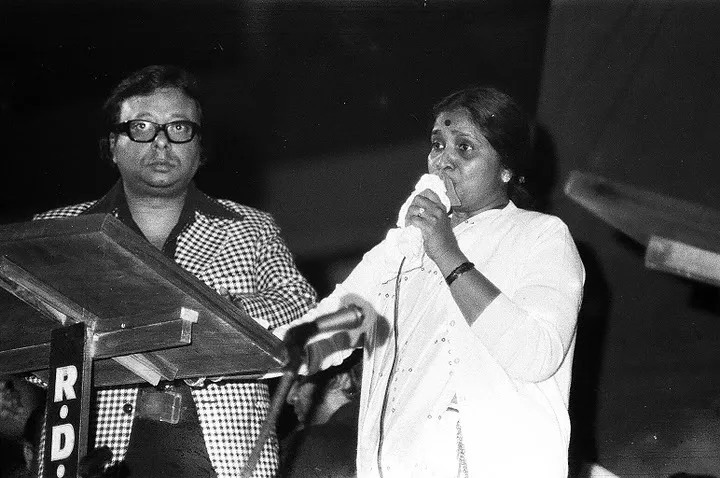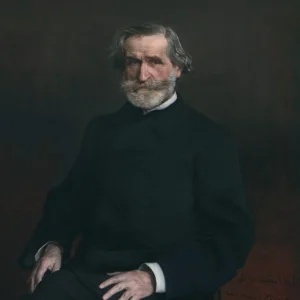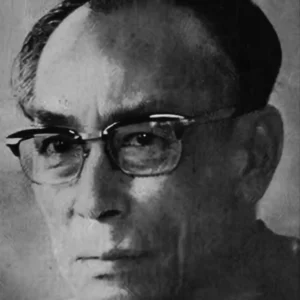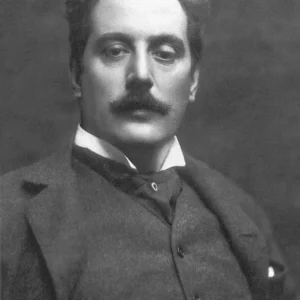Rahul Dev Burman, affectionately known as R.D. Burman or Pancham, is a name that resonates deeply in the world of Indian music. Known as one of the most innovative composers of Bollywood’s Golden Era, Burman’s music has left an indelible mark on the hearts of millions. From the groovy “Dum Maro Dum” to the soulful “Tere Bina Zindagi Se”, his melodies continue to inspire and enchant. But who was R.D. Burman, and how did he shape the sound of Indian cinema? Let’s explore the life, work, and enduring legacy of this musical genius.
Early Life: Growing Up in a Musical Dynasty
R.D. Burman was born on June 27, 1939, in Kolkata, India, into a family steeped in musical tradition. His father, Sachin Dev Burman, was one of Bollywood’s most celebrated composers, and his mother, Meera Dev Burman, was a talented singer. Growing up in such an environment, it was almost inevitable that young Pancham would develop a passion for music.
From an early age, Burman was exposed to a wide range of musical influences, from classical Indian ragas to Western jazz and rock. This eclectic upbringing would later shape his unique musical style, blending traditional and modern elements to create something entirely new.
The Nickname ‘Pancham’: A Musical Prodigy
The Origin of the Name
Burman earned the nickname ‘Pancham’ as a child. Legend has it that whenever he cried as a baby, it sounded like the fifth note (Pa) of the Indian musical scale. The name stuck, and he became known as Pancham throughout his life.
Early Exposure to Music
Burman’s musical education began at home, where he learned to play various instruments, including the tabla, harmonium, and guitar. His father, S.D. Burman, recognized his talent early on and encouraged him to pursue music.
The First Break: Assisting S.D. Burman
Learning the Ropes
In the early 1960s, Burman began assisting his father, S.D. Burman, in composing music for Bollywood films. This apprenticeship allowed him to learn the intricacies of film scoring and hone his craft.
Composing His First Song
Burman’s first independent composition was for the film “Chhote Nawab“ (1961). The song, “Sar Jo Tera Chakraye”, showcased his knack for blending humor and melody, earning him recognition in the industry.
The Rise of a Legend: Defining Bollywood’s New Sound
The 1970s: A Decade of Innovation
The 1970s marked the beginning of Burman’s golden era. He composed some of his most iconic songs during this period, including “Dum Maro Dum“ from “Hare Rama Hare Krishna“ (1971) and “Chura Liya Hai Tumne“ from “Yaadon Ki Baaraat“ (1973).
Standing Out in a Competitive Industry
Burman’s music stood out for its innovation, energy, and versatility. He was unafraid to experiment with new sounds and genres, setting him apart from his contemporaries.
The Kishore Kumar Connection: A Match Made in Musical Heaven
The Partnership with Kishore Kumar
One of Burman’s most significant collaborations was with singer Kishore Kumar. Their partnership began in the 1960s and produced some of Bollywood’s most iconic songs, including “Roop Tera Mastana” from “Aradhana“ (1969) and “Chingari Koi Bhadke” from “Amar Prem“ (1972).
Impact on Bollywood Music
The Burman-Kishore duo revolutionized Bollywood music, bringing a fresh, youthful energy to the industry. Their songs remain timeless classics, beloved by generations of listeners.
The Asha Bhosle Collaboration: A Symphony of Voices
Working with Asha Bhosle
Burman also shared a legendary partnership with playback singer Asha Bhosle. Together, they created unforgettable melodies like “Piya Tu Ab To Aaja” from “Caravan” (1971) and “Dum Maro Dum” from “Hare Rama Hare Krishna” (1971).
The Magic of Their Collaboration
The combination of Burman’s compositions and Asha’s voice resulted in some of the most beautiful songs in Indian cinema. Their collaboration defined the sound of Bollywood’s Golden Era.
The Amitabh Bachchan Era: Soundtracks for the Angry Young Man
Composing for Amitabh Bachchan
Burman’s music played a crucial role in defining the persona of Amitabh Bachchan, the iconic “Angry Young Man” of Bollywood. Films like “Sholay” (1975), “Deewar” (1975), and “Don” (1978) featured soundtracks that complemented Bachchan’s intense performances.
Iconic Songs from the Era
Songs like “Yeh Dosti” from “Sholay” and “Khaike Paan Banaras Wala” from “Don” became anthems of the 1970s, cementing Burman’s legacy as a musical innovator.
The Folk Influence: Bringing Regional Sounds to Bollywood
Incorporating Folk Traditions
Burman often drew inspiration from Bengali, Punjabi, and other regional folk traditions. Songs like “Mehbooba Mehbooba” from “Sholay” and “Chura Liya Hai Tumne” from “Yaadon Ki Baaraat” showcase his ability to blend folk elements with mainstream Bollywood music.
The Appeal of Folk Melodies
These folk-inspired songs resonated with audiences, adding a unique flavor to Burman’s compositions and setting them apart from the rest.
The Western Touch: Blending Rock, Jazz, and Disco
Experimenting with Western Genres
Burman was one of the first Indian composers to incorporate Western genres like rock, jazz, and disco into his music. Tracks like “Dum Maro Dum” and “Yeh Dosti” showcase his versatility and innovation.
The Impact of Western Music
By blending Western and Indian elements, Burman created a unique sound that appealed to both traditional and contemporary audiences.
The Classical Touch: Blending Tradition with Modernity
Using Classical Ragas
Burman’s deep knowledge of classical music allowed him to create melodies based on traditional ragas. Songs like “Chura Liya Hai Tumne” (based on Raga Pilu) and “Tere Bina Zindagi Se” (based on Raga Yaman) are prime examples of his classical touch.
The Fusion of Styles
By blending classical and modern elements, Burman created a unique musical style that appealed to both traditional and contemporary audiences.
The Personal Struggles: Balancing Fame and Family
Strained Relationship with S.D. Burman
Burman’s relationship with his father, S.D. Burman, was often strained due to professional rivalries. However, they eventually reconciled, and R.D. Burman went on to become a legendary composer in his own right.
Influence on His Music
Burman’s personal struggles and challenges often found expression in his music, adding depth and emotion to his compositions.
The Legacy of “Sholay”: A Musical Masterpiece
The Soundtrack of “Sholay”
The soundtrack of “Sholay“ (1975) is considered one of Burman’s greatest achievements. Songs like “Yeh Dosti” and “Mehbooba Mehbooba” remain timeless classics.
A Landmark in Indian Cinema
The music of “Sholay” played a crucial role in the film’s success, cementing Burman’s legacy as one of Bollywood’s greatest composers.
The Final Years: A Quiet Farewell
Composing for “1942: A Love Story” and “Parinda”
In his final years, Burman composed music for films like “1942: A Love Story“ (1994) and “Parinda“ (1989), showcasing his enduring talent and creativity.
His Passing in 1994
R.D. Burman passed away on January 4, 1994, leaving behind a rich musical legacy that continues to inspire generations.
R.D. Burman’s Influence on Indian Music
Inspiring Future Composers
Burman’s work inspired future composers like A.R. Rahman, Vishal-Shekhar, and Pritam, who continue to draw inspiration from his melodies.
Shaping the Sound of Indian Cinema
Burman’s music defined the sound of Bollywood’s Golden Era, setting a standard for excellence that remains unmatched.
Awards and Recognition: Honoring a Legend
Filmfare Awards and Other Accolades
Burman won numerous awards, including Filmfare Awards for Best Music Director. His contributions to Indian music were widely recognized and celebrated.
Posthumous Recognition
Even after his death, Burman’s music continues to be celebrated, with tributes and retrospectives honoring his legacy.
The R.D. Burman Playlist: Must-Listen Songs
A Curated List of Iconic Tracks
From “Dum Maro Dum” to “Yeh Dosti”, Burman’s songs remain timeless classics that every music lover should experience.
Why These Songs Remain Timeless
Burman’s melodies are timeless because of their emotional depth, simplicity, and universal appeal.
Visiting R.D. Burman’s World: A Fan’s Guide
Must-Watch Films Featuring His Music
Films like “Sholay”, “Aradhana”, and “Yaadon Ki Baaraat” are essential viewing for anyone interested in Burman’s music.
How to Experience His Legacy Today
From streaming platforms to live tributes, there are many ways to experience and celebrate R.D. Burman’s musical legacy.
Conclusion: Why R.D. Burman’s Music Endures
R.D. Burman’s melodies continue to inspire and enchant, reminding us of the power of music to transcend time and touch the soul. His legacy is a testament to the enduring impact of creativity and passion.
FAQs:
- What is R.D. Burman’s most famous song?
R.D. Burman composed many iconic songs, but “Dum Maro Dum” from “Hare Rama Hare Krishna” (1971) and “Yeh Dosti” from “Sholay” (1975) are among his most celebrated works. - How did R.D. Burman influence Bollywood music?
R.D. Burman revolutionized Bollywood music by blending folk, classical, and Western elements. His innovative sound defined the 1970s and 1980s and inspired future generations of composers. - What was R.D. Burman’s relationship with Kishore Kumar?
R.D. Burman and Kishore Kumar shared a legendary partnership, creating some of Bollywood’s most iconic songs. Their collaboration began in the 1960s and continued until Burman’s death in 1994. - How did R.D. Burman incorporate Western music into his compositions?
R.D. Burman experimented with Western genres like rock, jazz, and disco, creating a unique sound. Tracks like “Dum Maro Dum” and “Yeh Dosti” showcase his versatility and innovation.



